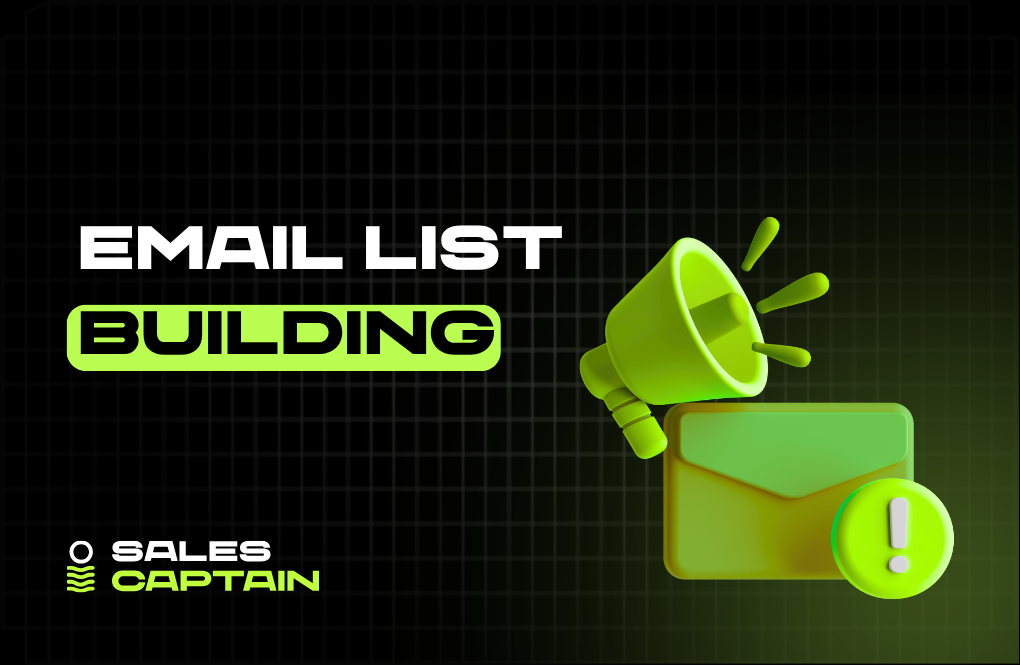

Automated Sales Prospecting: The Future of Scalable, Signal-Driven Outbound

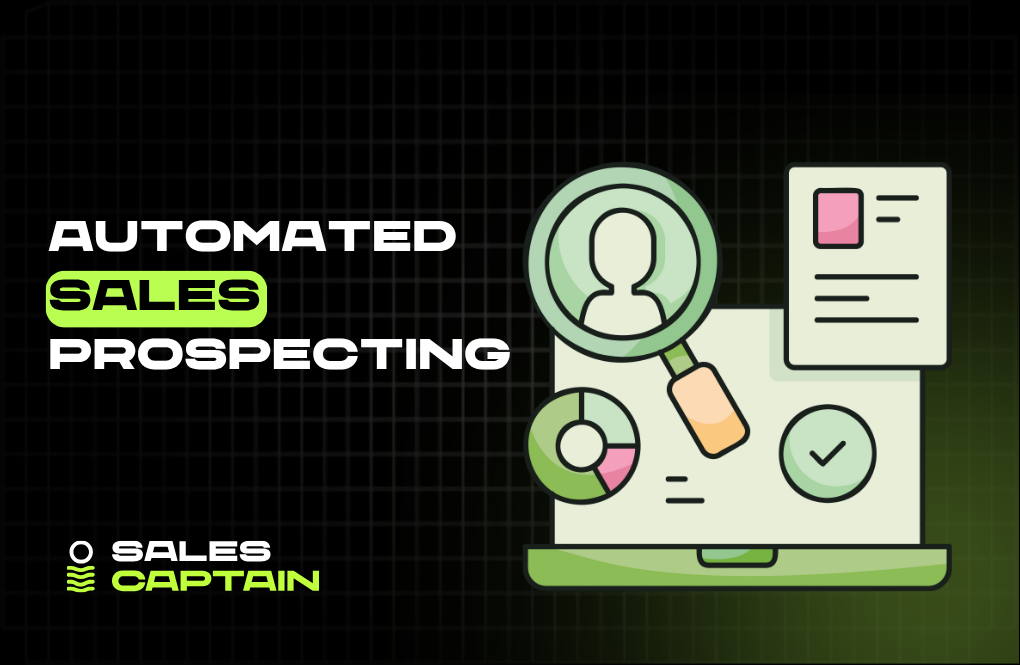
Sales prospecting has evolved from endless cold emails into a science of timing, data, and automation. In today’s crowded markets, success doesn’t come from sending more messages but from sending the right one at the right time. Automated sales prospecting blends AI, clean data, and workflow logic to find, qualify, and engage leads with precision—turning what used to take whole SDR teams into a smooth, scalable GTM engine.
Why Automated Sales Prospecting Matters Now
Changing Sales Landscape and Demand
Cold outreach used to be about volume. Manual email scraping, guessing job titles, pressing “send” hundreds of times, hoping for replies. That playbook’s gone stale.
Modern buyers are harder to reach and even harder to convert. They expect relevance, context, and value on the first touch.
At the same time, outbound has shifted from being purely a sales function to a growth lever owned by GTM. Marketing teams are stepping into the driver's seat, running outbound like ad campaigns: signal-triggered, fast-learning, tightly measured.
This shift demands new systems, not more reps. Ops over headcount. Workflow over hustle.
Rise of AI and Technology in Sales
AI didn’t just make sales prospecting faster; it rewrote the rules. What used to take entire SDR teams can now be done in seconds with smart prompts and clean data.
You can analyze intent signals, personalize messages at scale, and track engagement in real time, all without lifting a finger.
Tools like large language models and real-time data enrichment engines have turned outbound into a cheap, scalable, and signal-driven engine for GTM.
This is why technical GTM operators are replacing traditional SDRs. The question is no longer “Who can write more cold emails?” The question is “Who can build better outbound infrastructure?”
Key Concepts of Automated Sales Prospecting
What Is Automated Sales Prospecting?
Automated sales prospecting is the use of technology to find, qualify, and engage leads without manual grunt work.
That includes everything from sourcing ideal-fit leads based on firmographic filters, to enriching contacts with fresh data, to sending personalized outreach, all running in the background, continuously.
It’s not just about sending more emails. It’s about building systems that spot the right signals, match the right timing, and launch the right message, automatically.
Differences Between Manual and Automated Prospecting
Manual prospecting is slow, inconsistent, and tied to human effort. You rely on gut feeling more than data. You skip steps when time runs short. You get outpaced by competitors running 10x faster.
Automated prospecting creates compounding speed. Systems don’t forget steps. They don’t get tired or miss follow-ups. They run 24/7. And when built right, they get smarter as they go.
Where manual is rep-led, automated is system-led. Human effort shifts from doing the work to designing and optimizing it.
Benefits of Automation in Sales Prospecting
- More pipelines with fewer resources.
- Higher reply and meeting rates through personalization at scale.
- Ability to test, iterate, and scale what works, instantly.
- Better lead quality through signal-based targeting.
- Faster execution cycles led by data, not bandwidth.
It’s not just about efficiency. It’s about performance. The best outbound teams don’t just automate to save time; they automate to win faster.
Core Technologies Behind Automation
AI and Machine Learning Applications
AI sits at the core of modern prospecting. It helps identify buying signals, generate personalized messaging, prioritize leads, and even predict next-best actions.
Machine learning models can detect patterns in open rates, replies, and conversions across campaigns. That data loops back to continuously sharpen targeting and copy.
AI also powers things like:
- Smart email first-line generation
- Intent scoring from multiple data sources
- Message variation based on persona and channel
This isn’t fluff. Teams that actively use AI in outbound are seeing 2-3x efficiency in pipeline generation.
Data-Driven Targeting Techniques
Spray-and-pray is dead. Precision wins.
Instead of pulling static lead lists and guessing who might need what, modern systems use real-time signals to guide targeting, hiring trends, funding data, job changes, tech stack signals, keyword mentions, and more.
It’s not about contacting 10,000 people. It’s about contacting the 100 who are most likely to care, now.
These signals get layered into filters, which get automated into workflows, continuously identifying new high-fit accounts and contacts without human involvement.
Integration with CRM and Other Tools
Automation doesn’t live in a vacuum. It lives inside your GTM stack.
That means syncing with your CRM, updating deal stages, handoffs between teams, triggering outreach sequences, logging touchpoints, all without ticketing a RevOps person every time.
Strong integrations make automation visible, trackable, and measurable. Weak ones cause duplications, messy records, and poor customer experiences.
No matter which outbound tool you use, make sure it plays well with your existing infrastructure. Workflow is king.
Step-by-Step Framework for Implementation
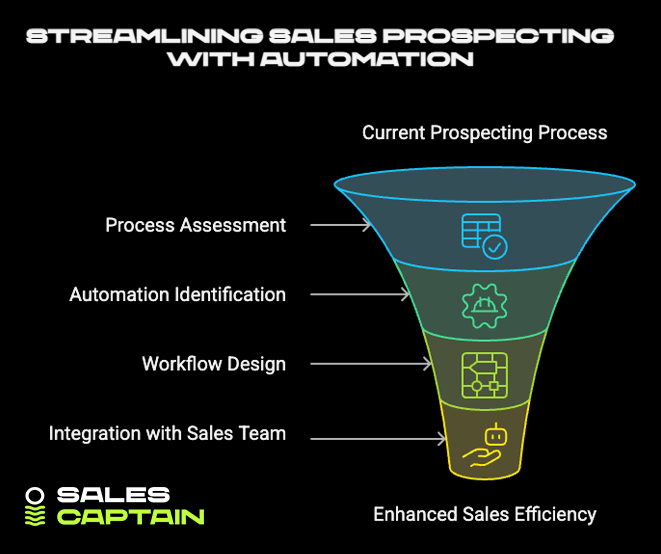
Assess Your Current Prospecting Process
Start with brutal honesty. What’s a manual? What’s slowing you down? Where are the drop-offs?
Map the full workflow: sourcing, researching, writing, sending, follow-ups, CRM updates. Don’t skip the edge cases.
The goal here isn’t just to mirror your process in automation, it’s to find what’s redundant, what’s repeatable, and what’s worth keeping human.
Identify Suitable Automated Solutions
Once you’ve audited your process, look for tooling that can replace or enhance specific steps.
- Lead sourcing? Tools like Clay crush it, pulling from dozens of data sources and enriching in real-time.
- Outreach sequencing? Use tools that connect with your CRM and fire based on logic, not just time.
- Data updates? Sync tools that clean and enrich records automatically.
Don’t pick the flashiest UI. Pick based on fit within your stack, ability to scale, and how fast it gets you live.
Design a Workflow for Automation
Now stitch it together.
Take the individual automated steps and connect them into a system. Example: Trigger a workflow when a company hires a new VP of Sales, enrich their profile, write a hyper-targeted intro, and launch a custom 3-touch campaign, all in hours, not weeks.
System design is more valuable than tool selection. A bad workflow with great tools still loses.
Integrate Automation with Sales Team Activities
Automation should empower reps, not replace them entirely.
Use automation for setup, prep, follow-ups, tracking, so humans can double down on live conversations, closing, and strategy.
Sync tasks and notes into CRM, alert reps when leads show intent, and feed hot prospects into live call queues. Don’t let automation run in a silo.
The best GTM systems work like a relay race, automation sets up the handoff, reps carry it to the finish.
Best Practices for Effective Automation
Focus on Personalization at Scale
Automation does not mean generic. Don’t fall into the trap of bulk messaging.
Use dynamic variables tied to real-time data: job changes, role-specific pain points, and recent events.
The best outbound doesn’t feel automated. It feels like you did your homework.
Good tools help, but the secret sauce is in the logic and the inputs.
Utilize A/B Testing for Optimization
No one nails it on the first try. Your best-performing copy, timing, and targeting logic will come from iteration.
Set up ongoing A/B tests, subject lines, sender names, CTAs, and intro angles. Watch for patterns, not just one-off wins.
Run tests in layers, document learnings, and bake improvements back into workflows.
A/B testing isn’t optional. It’s how automations learn.
Monitor and Analyze Performance Regularly
Automation doesn’t mean set-it-and-forget-it. What worked last month might tank this month.
Track performance by campaign, rep, persona, and channel. Audit reply quality, conversion quality, not just open or click rates.
Watch for breakdowns: Is intent scoring falling off? Are signals too broad? Are you automating bad leads?
Build feedback loops with marketing and sales. Treat your outbound system like a product, always shipping updates.
Done right, automated sales prospecting doesn’t just scale, it compounds.## Top Tools for Automated Sales Prospecting
Overview of Leading Tools in 2025
The tool market for automated prospecting is crowded, but not equal. What separates the winners is speed, signal integration, and how deeply they play into your GTM system.
Here’s a quick lap around some top contenders in 2025:
- Clay, your programmable data engine. Pull from dozens of sources, enrich leads in real-time, and build logic-driven workflows that launch themselves. Using the link above gives you 3,000 free credits.
- Apollo is popular for all-in-one outbound, mixing lead data, sequencing, and dialer in one place. Fast starter tool for early teams, but heavier workflows can feel rigid.
- Close.com, CRM-first, built around smart sequences and sales workflows. Great for small teams who want CRM-native automation.
- Smartlead, Cold email sequencing tool that allows multiple inboxes, auto-warming, and custom tracking. Best if you want to run multiple domains at scale.
- Salesloft + Outreach, Legacy players focused on high-volume sales teams. Powerful, but clunky unless deeply configured.
- PhantomBuster / TexAu, DIY web scraping and task automation tools. More flexible, but require some technical setup and upkeep.
Each of these handles a different slice: sourcing, sequencing, data refresh, or outbound operations. The magic happens when they're stacked smartly, or when a tool like Clay unifies multiple workflows.
Key Features and Use Cases of Each Tool
Let’s break it down by what they’re truly great at:
- Clay
- Pulls from LinkedIn, Crunchbase, BuiltWith, Twitter, and more, all in one view.
- Real-time enrichment to keep data fresh and relevant.
- Logic-based workflows to auto-trigger outreach based on signals.
- Use case: Trigger an outreach sequence the moment a target company hires a VP of Marketing, enriched with tech stack and recent news in seconds.
- Apollo
- Built-in database of over 200M contacts.
- Decent email sequencing and basic scoring.
- Use case: SMB teams using it for all-in-one outbound with fast startup.
- Smartlead
- Let's you run multiple sending inboxes with auto-rotation.
- Strong deliverability tools (warm-up, bounce handling).
- Use case: Agencies or demand gen teams doing mass scaling and inbox management.
- Close.com
- Built-in calling, texting, and pipeline tools.
- Strong for high-velocity sales with automation-friendly CRM.
- Use case: SDRs who want everything inside one slick UI without integrations.
- Salesloft / Outreach
- Deep integrations with CRMs and call tools.
- Structure over flexibility, better for teams that follow a tight process.
- Use case: Mid-to-enterprise sales teams running traditional SDR structures.
- PhantomBuster / TexAu
- DIY automations across LinkedIn, Crunchbase, and email lookups.
- Requires careful maintenance but is super flexible.
- Use case: Technical operators building custom outbound infrastructure from scratch.
Choose tools based on your GTM maturity. If you’re building workflows with triggers and enrichment logic, Clay wins. If you're spinning up your first cold campaigns, Apollo or Smartlead gets you shipping fast.
Common Challenges and How to Overcome Them
Data Privacy and Compliance Issues
Prospecting automation plays with a lot of data, email addresses, job titles, company history, and intent signals. Cut corners here, and you're looking at legal risk and deliverability nightmares.
Here’s where people mess up:
- Scraping without respecting the platform TOS
- Emailing people without opt-in where GDPR or CASL applies
- Ignoring unsubscribe and data deletion protocols
Fix it with structure:
- Use reputable enrichment platforms
- Always include opt-out and honor unsubscribes
- Segment outreach by geography and filter for compliance
Pro tip: Build your workflows around compliance. Don’t bolt it on later.
Maintaining Authenticity in Automation
Just because it's automated doesn't mean it has to feel robotic.
The trap: Running cookie-cutter messages at scale that read like they were written by a bot. No personalization, no context, no chance.
Avoid it by:
- Using dynamic fields driven by actual data (not just {{FirstName}})
- Keeping tone conversational, not corporate
- Layering in recent context like hires, posts, and funding events
Automation should feel like a shortcut to relevance, not a shortcut to laziness.
Balancing Automation with Human Touch
Automation is for attention. Humans are for conversion.
The best GTM systems don’t replace reps; they give them more time in front of qualified leads. But if your system leaves no room for human follow-up or ignores nuances in replies, you’ll burn trust fast.
Set up routing rules where humans jump in:
- When someone replies with interest
- When signal strength is high
- When a sequence hits a high engagement threshold
Think of it like this: automation opens doors. Humans close them.
Key Metrics to Track Success
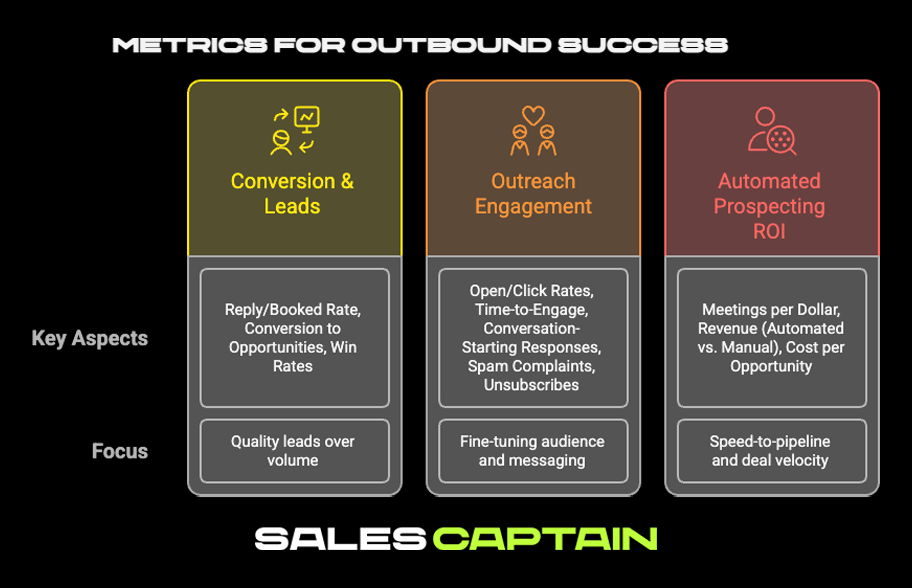
Conversion Rates and Lead Quality
Volume is a vanity metric. Conversion is truth.
Track:
- Reply rates vs booked meetings
- Conversion to qualified opportunities
- Win rates on automated vs manual leads
If your pipeline looks busy but closes thin, your automation is either reaching the wrong people or saying the wrong thing.
A strong outbound flywheel prioritizes quality leads over pumped-up lists. Less spray, more aim.
Engagement Metrics for Outreach
Not all opens are equal.
Watch:
- First-touch open and click rates
- Time-to-engage across sequence steps
- Responses that trigger conversations, not just bounces
Also measure negative engagement:
- Spam complaints
- Unsubscribes by sequence or persona
This helps you fine-tune not just who you reach, but how you reach them.
ROI from Automated Prospecting
The ultimate question: Is the machine paying off?
Good ROI metrics:
- Meetings booked per dollar spent on tools/credits
- Revenue from automated campaigns vs manual
- Cost per opportunity
Avoid tracking just cost savings. Focus on speed-to-pipeline and deal velocity uplift; that’s where automation compounds.
Implementation Tips for Sales Teams
Training Your Team on New Tools
Don’t just drop tools on your reps and bounce. Get real buy-in.
Best approach:
- Run a few workflows as a team and debrief the results
- Create shared success metrics
- Highlight how automation reduces prep, not personalization
Bonus: let reps shape how tools are used. The more it feels like theirs, the faster they adopt.
Establishing a Workflow for Continuous Improvement
Automated prospecting is not static. Market signals shift, tools evolve, and personas change.
Set up cycles:
- Weekly campaign reviews (who replied, why)
- Monthly workflow audits (what’s getting stale)
- Quarterly logic updates (new triggers, new segments)
Treat your outbound automation like a product; it ships, it learns, it iterates. This is where GTM operators shine.
Encouraging Feedback and Adaptation
This isn’t just a sales team thing. Demand gen owns part of this. So does marketing. Maybe even RevOps.
Make workflows visible. Use shared dashboards. Invite feedback loops where anyone can flag:
- Botched personalization
- Campaign fatigue
- Lead quality issues
When everyone's invested, automations get smarter, not just faster.
Mistakes to Avoid in Automated Prospecting
Over-Automation Leading to Impersonal Outreach
Blasting a thousand contacts with a templated email isn’t prospecting. It’s pollution.
Don’t confuse automation with the absence of thought.
If your outreach feels cold and generic, your prospects won’t blame your software; they’ll blame your brand.
Slow it down. Pull real-time signals into your flow. Score lead urgency before messaging. Volume without relevance is just noise.
Ignoring Data Analysis and Refinement
Automation without analysis is just spinning.
If you’re not closing the loop on what’s working, messaging, personas, timing, and touchpoints, then you’re stuck automating mistakes.
Schedule regular audits:
- Sequence-level performance
- Persona response patterns
- Buying signals that matter
Build dashboards with actionable data, not vanity metrics. This is where agencies like SalesCaptain stand out: not just cold outreach, but feedback-driven GTM optimization.
Failing to Maintain Prospect Lists
Your list isn’t future-proof. Titles change, people churn, companies pivot.
If your automation pipes rely on the same stale lead list from six months ago, you’re chasing ghosts.
Fix this:
- Enrich your CRM weekly
- Remove bounced or non-responsive leads automatically
- Layer in new signals like hiring, funding, press, or tech changes
The more alive your data, the stronger your automation. Garbage in, garbage out, always.## Future Trends in Automated Sales Prospecting
AI Enhancements on the Horizon
Today’s AI can write cold emails and enrich data. Tomorrow’s AI will know exactly when to send them, who to target next, and how to adapt messaging mid-sequence.
We’re moving from assistive AI to autonomous workflows. Think less “write a catchy subject line” and more “launch an entire campaign when the right signals hit, and iterate mid-flight.”
Vector databases, advanced LLM chaining, and agents that communicate with each other are becoming part of outbound infrastructure. AI won’t just power snippets, it’ll orchestrate the whole flow.
Expect:
- Autonomous lead sourcing using behavior + firmographic overlays
- Self-optimizing sequences that evolve mid-campaign
- Multi-channel orchestration (email, social, SMS) guided by AI-based engagement models
If your outbound setup doesn’t have feedback loops and signal ingestion built in, it’ll be obsolete fast.
Expansion of Predictive Analytics in Sales
Prediction is shifting from “what happened” to “what to do next.”
Predictive analytics will soon decide which accounts to prioritize, how likely they are to convert, and what messaging angle drives action, using dynamic signals like hiring trends, company behavior, and competitor shifts.
It’s no longer just about forecasting the pipeline. It’s about generating it.
GTM teams will stop asking “who should we target” and start asking “which actions give us the highest probability of meeting our number next quarter.”
And because predictive models get sharper with more data, automation becomes less about sending faster and more about sending smarter.
The Role of Natural Language Processing in Outreach
NLP is already powering parts of outbound, but we're still early.
Soon, NLP will:
- Detect emotion and sentiment in replies to categorize intent
- Summarize a prospect’s LinkedIn profile to write custom intros
- Automatically rewrite bad copy into something punchy and relevant
- Pull tone and language style from a company’s website to echo in cold emails
That means no more generic “Hi {{firstName}}”, and a lot more “Noticed you’re hiring in sales while pushing into healthcare…” written by a model, not a junior SDR.
Combined with real-time data, NLP gives automation its human edge.
If AI decides the who and the when, NLP decides the how.
FAQs
Any B2B business that sells to a defined audience benefits from automation, especially if reps are wasting hours sourcing, researching, and manually writing cold emails.
It’s a no-brainer for:
- SaaS companies doing outbound at scale
- Agencies with repeatable ICPs
- GTM teams are trying to grow the pipeline without growing headcount
Smaller teams get leveraged speed. Larger teams get precision and scale. Technical operators get control. Agencies get processes they can duplicate.
The leverage scales fast when you add real-time signals and enrichment into the mix. And with tools like Clay giving 3,000 free credits to start, the bar to entry is lower than ever.
Use real signals, not just merge tags.
Bad automation uses {{firstName}}, generic lines, and canned outreach. Good automation pulls in actual clues, what tool the company uses, who they just hired, what role the contact plays, and writes with intent.
How to make it feel human:
- Use custom first lines based on public data
- Reference events, product launches, social activity
- Match tone to persona (CTOs don’t love fluff, CMOs don’t love jargon)
It feels personal when it feels like you care.
The tech is there. It's your logic and inputs that determine how real it lands.
Forget vanity. Track what leads to revenue.
Start with these:
- Positive reply rate (actual interest, not just “unsubscribe” or “who is this?”)
- Meeting booked rate per sequence
- Deal conversion rate from automated vs manual leads
- Pipeline generated per $ spent
Also monitor:
- Bounce rates, spam complaints, unsubscribes, all signs of bad data or poor relevance
Use dashboards that tie touch to outcome. Not just opens or clicks. Don’t fall for surface metrics that don’t get you closer to the pipeline.
Ask this first: Are you building a workflow, or buying a workflow?
If you want control, trigger-based logic, data blending, signal-driven outreach, start with flexible tools like Clay, not rigid CRMs or sequencers.
If you're earlier-stage, you might want a plug-and-play tool like Apollo. But eventually, you’ll hit walls.
Stack selection depends on:
- How complex is your GTM motion?
- Do you care more about speed or customization?
- Are you running one playbook or ten?
Choose tools that integrate well with your CRM, fit your team's workflow, and give operators the freedom to build.
And if you’d rather skip the build phase entirely, work with an agency like SalesCaptain, which designs these outbound systems from scratch, fast.
No. But it makes each human way more effective.
Reps shouldn’t be writing the same cold email 100 times, or clicking through LinkedIn trying to find job titles. They should be having conversations, qualifying interest, and closing deals.
Automation handles the grunt work. Humans handle nuance.
The shift is real, though: SDRs are getting replaced by GTM operators who understand tools, workflows, and how to build repeatable infrastructure.
The future isn’t about more reps. It’s about fewer reps doing higher-leverage work, powered by smarter systems.
RELATED ARTICLES
Check out more articles on our blog!
RELATED ARTICLES
Lorem ipsum dolor sit amet, consectetuer adipiscing elit, sed diam nonummy nibh euismod tincidunt ut laoreet dolore magna aliquam erat volutpat.
.png)
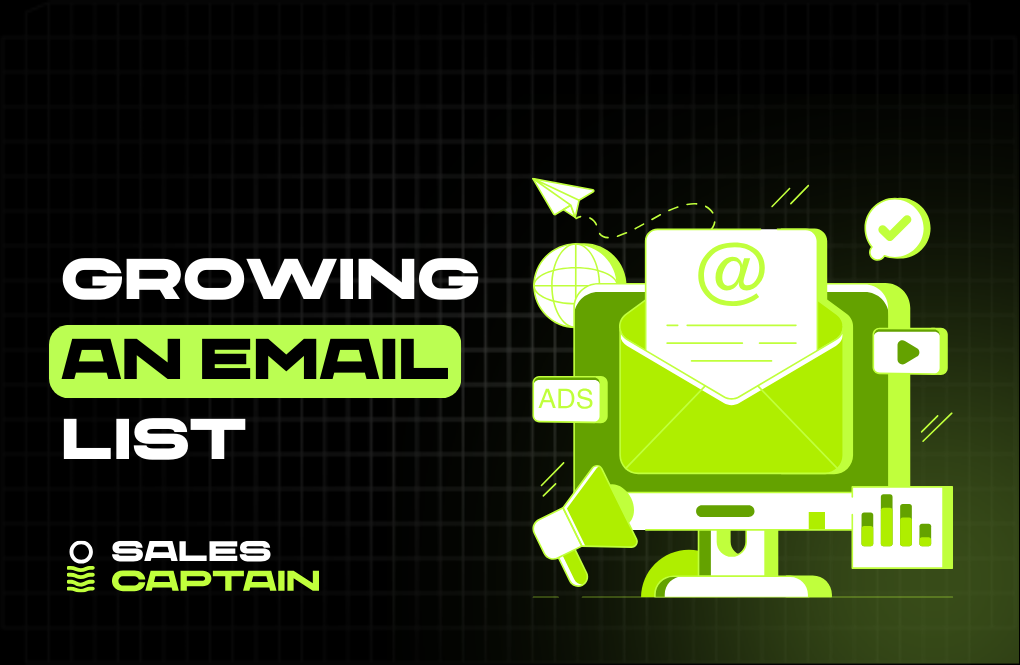
.png)

.jpg)
